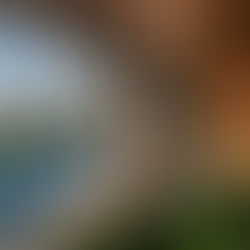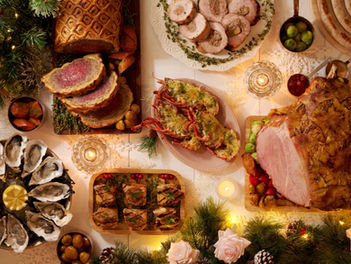Six fun days out with kids in Seychelles
- Asia Family Traveller

- Jul 29, 2021
- 6 min read
Updated: Jul 8, 2022
The Seychelles is one of the first countries in the world to have achieved herd immunity. Carolynne Dear finds out how its sun drenched islands will be navigating the new holiday normal.

Sun and fun on the beach in the Seychelles.
There has never been a time when we’ve been more ready for a beach break. The dream of an icing sugar beach and a swaying palm has been a mirage in a never-ending desert of lockdowns, quarantine and social distancing.
But the dream is now there for the taking. The stunning Seychelles has been sitting in splendid isolation in the Indian Ocean while the pandemic has raged and following a successful vaccine roll-out, the tiny population of just 100,000 is now ready to - safely - welcome back holidaymakers.
Often synonymous with honeymooners, the islands are also perfect for a family break. Think friendly locals, soft sand, crystal clear seas, plenty of resorts with kids clubs and heaps of fresh air activities to burn off all that pent up lockdown energy.
Intact nature, pristine beaches and a unique biodiversity make it a fascinating holiday destination. If you’re looking for somewhere that will boost your feelings of wellness, Seychelles should be at the top of your list.
Family holidays are enhanced by hotels offering heaps for littlies, including fun activities and kids’ clubs. In addition many resorts are within an easy walk from an idyllic beach.
Depending on the time of year that you’re visiting, a stay can include conservation activities, such as returning sea turtles to the ocean. The country indeed fosters a strong conservation culture, with more than half of the landmass protected. Beaches are clean and quiet and the Seychelles has never promoted mass tourism.
There is no ‘best time of year to go’ as the country benefits from warm summer temperatures all year round. Between May and September the south-east trade winds provide a refreshing breeze on the beaches and if you’re looking to dive, the best visibility is in April and May or the last three months of the year.
As an island nation with a tiny population, Seychelles has been able to contain the effects of Covid-19. The government has navigated a canny course through the pandemic and is now inviting holidaymakers back to its sandy shores needing nothing more than a negative PCR test taken within 72 hours of travel.
The Ministry of Health and tourism stakeholders have worked closely to ensure that health and safety protocols are tight and properly rolled out. All hotels and resorts have a set of regulations that they must adhere to. Many have also set out their own hygiene protocols, so check what will be expected of you before you book.
Because Seychelles has now achieved herd immunity (scientists believe around 70% of a resident population needs to have been vaccinated to achieve this) it believes itself safe from the pandemic, as long as visitors enter properly tested.
There is no quarantine regulation or restriction on movement and no minimum stay requirement. However, visitors must abide by certain public health measures, including wearing a face mask, social distancing and regular hand washing.

Tranquility at Petite Anse beach.
Holidaymakers will have access to all communal areas of their hotel or resort, including pools, spas and kids’ clubs.
The reopening announcement was made by Sylvestre Radegonde, minister for Foreign Affairs and Tourism, at a joint press briefing with Seychelles Tourism Board earlier this year.
“The vaccination campaign has been quite successful,” said Radegonde. “The government has done everything in its power to make sure the population is protected. We have now arrived at a point where opening our borders further is the next step to allow for our economic recovery.”
He added that the new measures announced “reflect broadly the recommendation of our tourism partners and have been done in full consultation with and the endorsement of our health authorities.”
The Seychelles said it will continuously review the new measures to ensure the health and safety of its residents and visitors are not compromised.
Day tripper
Exploring the Seychelles with kids
La Digue

Enjoying a relaxed pace of life on La Digue.
La Digue is world renowned for its stunning beaches, particularly Anse Source d’Argent and Grand Anse. Hire a local guide to take a tour of the harbour, La Passe village and Anse Source d’Argent, which is the world’s most photographed beach.
La Digue is the third most populated island of the Seychelles and the fourth largest by land area. It lies east of Praslin and west of Felicité Islands and is home to around 2,800 residents in the west coast villages of La Passe and La Reunion. There is no airport on the La Digue but it is linked by ferry with the islands of Praslin and Mahe.
Vallée de Mai Nature Reserve
This UNESCO World Heritage status forest is so impressive that in the nineteenth century, British general Charles George Gordon propagated a myth that it was the biblical Garden of Eden.
The reserve consists of nineteen-and-a-half hectares of palm forest on the island of Praslin. Visitors can see the famous ‘coco de mer’, the largest seed in the plant kingdom and from a palm tree that is believed to have once grown in the depths of the ocean. You might also be able to spot the rare Seychelles black parrot as well as mammals, snakes and reptiles.
Curieuse Marine National Park
This small island boasts a wealth of biodiversity and has been designated a marine national park since 1979.
Curieuse is home to hundreds of giant tortoises that were introduced in the late 1970s and early 1980s. There’s even a tortoise nursery on the island where hatchlings are nurtured until they turn five years old and are released into the wild.
Curieuse has an interesting history - for a hundred years it was a leper colony and the old doctor’s house built in 1873 is now a national museum housing displays on the Seychelles’ history and its flora and fauna.
Soak up the culture and then enjoy a dive at the coral gardens and Pointe Rouge, or take a fifteen minute boat ride to St Pierre islet with its fantastic snorkel and dive opportunities.
Moyenne Island

Laid-back in Ste Anne Marine National Park.
Today stunning Moyenne Island is the world’s smallest national park within the Ste Anne Marine National Park off the north coast of Mahé.
But it was once an unkempt brush pile. In the 1960s, Brendon Grimshaw, a newspaper editor from Yorkshire in the United Kingdom, paid the grand total of GBP8,000 for the uninhabited island. He then spent a back-breaking several decades transforming it into the eco paradise that it is today. He hand-planted more than 16,000 trees, including 7,000 mahogany trees, and hacked away the undergrowth to create five kilometres of nature paths. His work has attracted more than 2,000 species of birds to the island and he also took care of 120 giant tortoises.
Moyenne Island now boasts more than two thirds of all endemic plants to the Seychelles. It’s also rumoured to be the resting place of the diamond and ruby encrusted ‘Fiery Cross of Goa’ which was allegedly buried by pirates in the 1700s.
Grimshaw was offered millions by investors for the island but he refused and in 2008 it was declared a National Park.
Le Jardin du Roi, Mahé
Le Jardin du Roi is located two kilometres up in the hills above Anse Royale. The lush spice gardens were created by French spice entrepreneur Pierre Poivre. And yes, you read and translated that correctly - it is likely he was the ‘Peter Piper’ (or Pepper) of the famous English tongue-twister.
Poivre was a one-armed eighteenth century horticulturist, missionary and colonial administrator. In the 1760s, he became the Intendant of the Indian Ocean island of Réunion in Mauritius where he planted the Jardin Botanique des Pamplemousses (named after a nearby grapefruit-growing village), filled with plants from all over the tropics.
But importantly, he managed to smuggle cloves and nutmeg out of the Dutch East India Company-controlled Spice Islands (today part of Indonesia) to cultivate in the French-controlled Seychelles, thereby breaking the Dutch spice monopoly. From the Seychelles, the spices were also introduced into nearby Zanzibar.
Along with the gardens, Le Jardin du Roi also boasts a restaurant and café with great views over the coast and there’s a one-room museum in the planter’s house.
Morne Blanc, Mahé

Stunning coastal views from Seychelles' National Park over western Mahé.
The Morne Blanc hiking trail on Mahé leads you through an old tea plantation and up through lush rainforest until you reach a lookout point with spectacular views over the coast of western Mahé.
The two-kilometre track is accessible year-round and the hike up to the viewpoint perched on a sheer cliff takes around 45 minutes.
The forests are home to many of Seychelles’ endemic bird species, including Seychelles bulbul, Seychelles swiftlet and Seychelles sunbird.
Head up the trail early, though, as mist begins to swirl over the forest from midday, obscuring the views from the top.
This feature was first published in the Spring issue of Asia Family Traveller magazine. Never miss an issue by subscribing now.



















AV在线看 AV在线看;
自拍流出 自拍流出;
国产视频 国产视频;
日本无码 日本无码;
动漫肉番 动漫肉番;
吃瓜专区 吃瓜专区;
SM调教 SM调教;
ASMR ASMR;
国产探花 国产探花;
强奸乱伦 强奸乱伦;
代发外链 提权重点击找我;
游戏推广 游戏推广;
Fortune Tiger Fortune Tiger;
Fortune Tiger Slots Fortune…
谷歌马甲包/ 谷歌马甲包;
谷歌霸屏 谷歌霸屏;
מכונות ETPU מכונות ETPU;
;ماكينات اي تي بي…
آلات إي بي بي…
ETPU maşınları ETPU maşınları;
ETPUマシン ETPUマシン;
ETPU 기계 ETPU 기계;
代发外链 提权重点击找我;
google留痕 google留痕;
Fortune Tiger Fortune Tiger;
Fortune Tiger Fortune Tiger;
Fortune Tiger Slots Fortune…
站群/ 站群;
万事达U卡办理 万事达U卡办理;
VISA银联U卡办理 VISA银联U卡办理;
U卡办理 U卡办理;
万事达U卡办理 万事达U卡办理;
VISA银联U卡办理 VISA银联U卡办理;
U卡办理 U卡办理;
온라인 슬롯 온라인 슬롯;
온라인카지노 온라인카지노;
바카라사이트 바카라사이트;
EPS Machine EPS Machine;
EPS Machine EPS Machine;
EPS Machine EPS Machine;
EPS Machine EPS Machine;